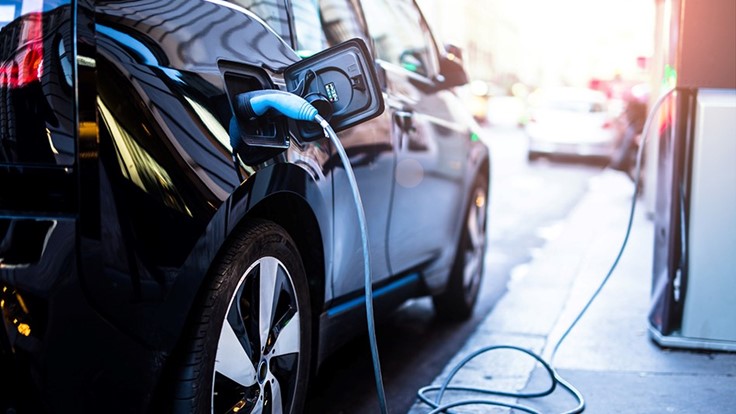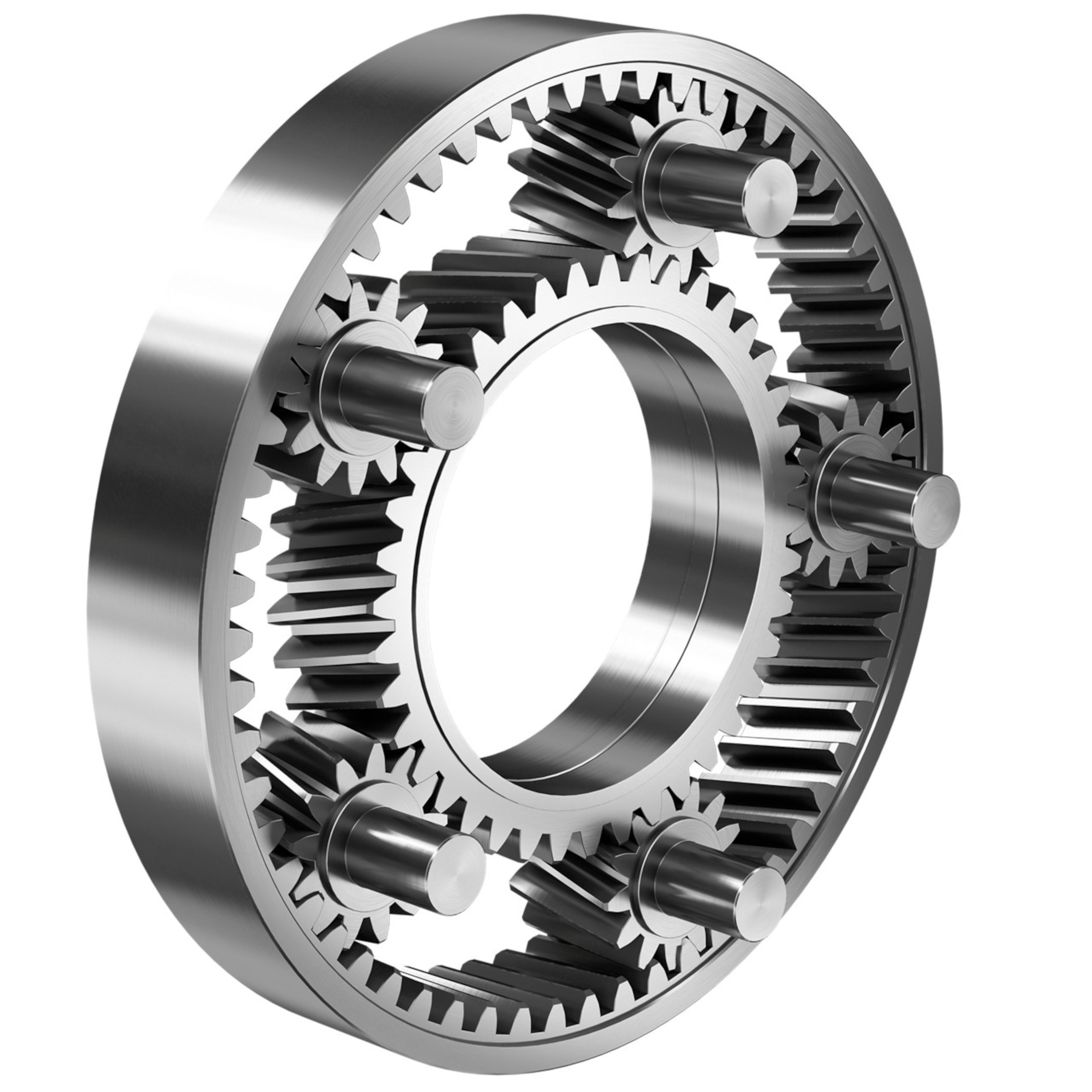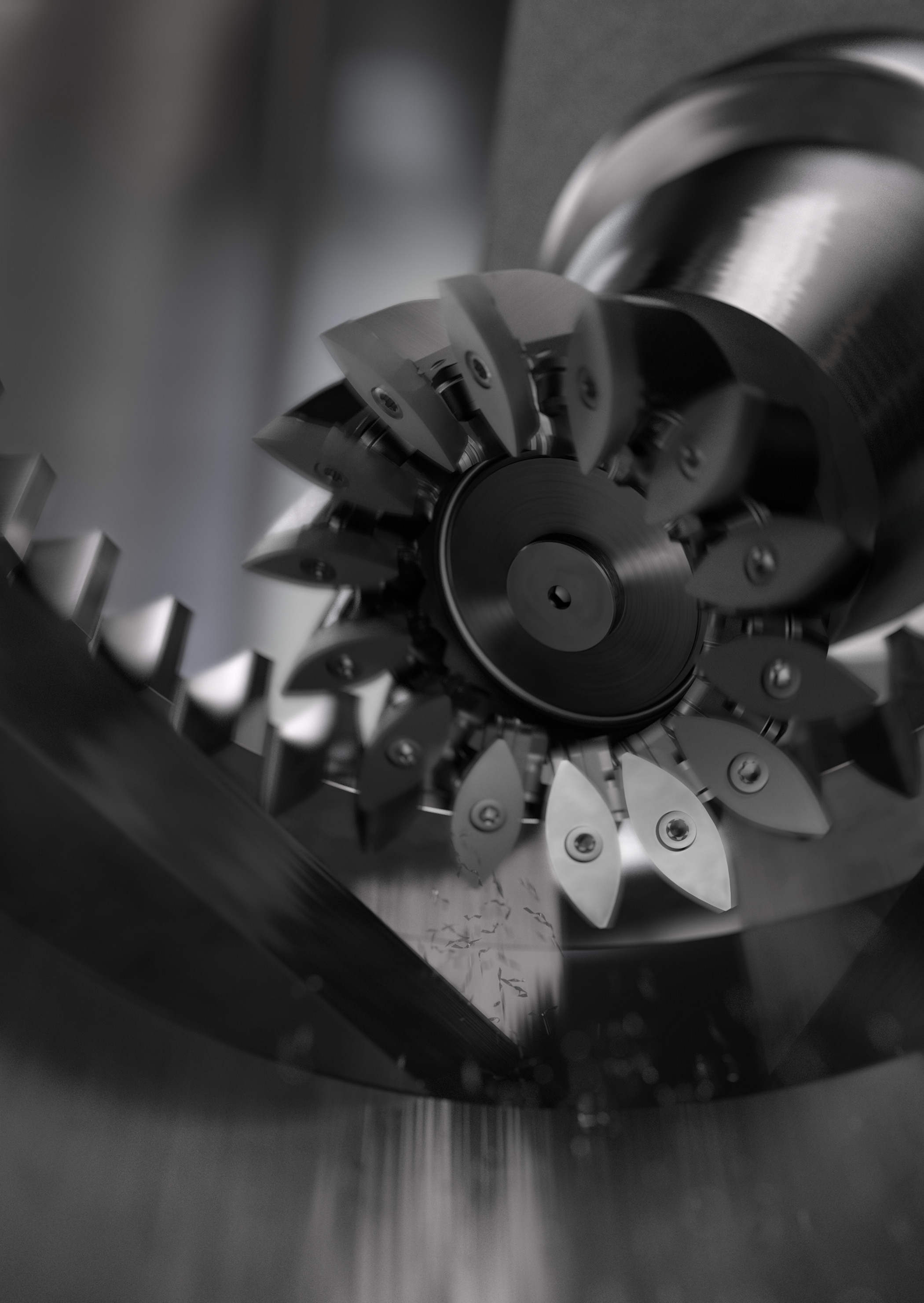
“It’s competition,” said the American businessman John Mackey, “that forces companies to get out of their complacency.”
We are seeing this in the global electric vehicle (EV) markets. Manufacturers must produce lighter and more compact EV transmissions from tough materials such as low-alloy steels — and those that rely on traditional manufacturing processes risk falling behind. Mats Wennmo, Global Automotive Transmission Manager at the metal cutting specialist Sandvik Coromant, explains why power skiving is crucial for competitive manufacturing.

Sales of electric vehicles (EVs) have taken a major leap forward in recent years. According to EV-Volumes, 541,780 new plug-in electric cars were registered globally in February 2022 — twice as many as in February of the previous year. Meanwhile, Virta reports that 1.06 million new EVs were registered in Europe in the first six months of 2021, compared to 413 during the first half of 2020.
From these figures, it’s clear that the global EV markets are growing fast — but what is driving these sales? One factor is the ambitious zero-emission targets pledged by the European Union (EU), Asia and the U.S. The EU has committed to reducing its greenhouse gases to at least 40 percent below 1990’s levels, and China to reduce its levels to 60-65 percent below those of 2005, by 2030. Meanwhile, the U.S. has pledged a 26-28 percent reduction below 2005’s levels by 2025.
What role can EVs play in helping these countries achieve their goals? In truth, comparisons between the environmental advantages of EVs versus internal combustion engine vehicles aren’t straightforward. According to Carbon Brief, it depends on the size of the vehicles, the accuracy of the fuel economy estimates used, how electricity emissions are calculated, the driving patterns used and even the weather in regions where the vehicles are used. There is no single estimate that applies everywhere. Nevertheless, Carbon Brief’s report concludes that EVs are responsible for considerably lower emissions over their lifetime than internal combustion engine vehicles.
E-mobility technologies can also support the other two major factors that will drive EV sales. First, a global move toward the use of more efficient and renewable energy sources, as outlined recently by European Commission President Ursula von der Leyen, for instance. Second, changing attitudes among consumers: half of those surveyed in PwC’s December 2021 Global Consumer Insights Pulse Survey said their perceptions had become more eco-friendly.
Planetary gears

For carmakers and original equipment manufacturers (OEMs), the above factors all underline the need to move away from traditional combustion engines, and China and Europe will take the lead on these developments. These EV markets will also form a diverse and competitive playing field as larger established companies like Porsche compete with smaller, globally expanding manufacturers such as Polestar.
At the same time, the manufacturing of EVs will also present extra challenges, with a risk that manufacturers relying on traditional production processes will find themselves left behind. To examine these challenges, let’s focus on the manufacture of gear components.
The ability to control a gear's revolutions per minute (rpm) is essential for all kinds of vehicles, including EVs. All EV transmissions are reduction transmissions, designed to reduce the vehicle’s speed so that it can be controlled and driven economically. Because there is no combustion engine noise in an EV, any noise from the transmission will be noticed. The main objective is therefore to prevent noise. This is where the quality of the machining setup plays a decisive role in making the transmission as compact, light and quiet as possible.
EV transmissions usually have a planetary design, with the planetary gears and the sun gear assembled inside the peripheral ring gear for a compact, lightweight assembly. The ring gear is the most difficult component to produce due to its thin walls and strict roundness tolerances. Unfortunately, traditional manufacturing processes can compound these issues with negative impacts on both time and cost.
Traditional manufacturing
Traditional manufacturing processes typically rely on single-purpose machines. Each machine is limited to a certain area of machining, and the workpiece is passed from one to the next. This makes production lines inflexible in terms of responding to necessary changes in the component design.
Moving the workpiece from machine to machine can also worsen the component quality by creating run-out and center deviations. The after-heat treatment is harder to control, and traditional soft machining methods followed by grinding processes are very expensive. These processes also require additional oil-based machining to improve the machining and chip evacuation processes.
These disadvantages will only become more pronounced over the coming years, given the anticipated major manufacturing trends for EVs. We can also expect to see a demand for increased speeds in the development of new transmissions, a need for higher productivity and flexibility and a demand for a shorter return on investment (ROI). Inflexible single-purpose machines will become less advantageous as flexibility, productivity and profitability become more important for manufacturing EV parts.
This is why manufacturers need to upgrade their traditional manufacturing processes. So, how can they do this? One way is by investing in multi-task machines. The grinding equipment commonly used in traditional manufacturing can be an expensive investment. A good way to sidestep this is to divide the machining of gear components into two processes: soft and hard machining. These methods can be implemented in a single, multi-tasking machine setup.
Multi-task machines can eliminate machining processes and their associated time and cost and improve part quality. The machines also offer benefits for customers. Along with improvements in product quality, the process cycle times are better than — or at least the same as — existing production solutions. Sandvik Coromant has seen minimum cost reductions of 30 percent for the end user.
Finally, manufacturers can achieve greater flexibility in producing future components for e-mobility. The process enables downsizing and weight reductions in transmission components. Power skiving can be applied to both internal and external gears and splines, but it is especially productive when it comes to internal machining. The method works particularly well in mass production, where short lead times are vital.
Single, continuous process
As mentioned, the ring gear is the most difficult component to produce in planetary gear, but the concept of power skiving — which has been around for over a century — is emerging as the most efficient way to achieve this. Power skiving is a process that combines shaping and hobbing (a machining process for gear cutting) into a single, continuous cutting process.
This has several significant advantages over traditional machining methods. Instead of relying on a single-purpose machine, with power skiving a complete component can be machined in one multi-task machine for higher productivity and flexibility. There is no need for specialized machines, and quality restrictions due to machine changes can be eliminated. This significantly reduces the total production time compared to processes with broaching, shaping and hobbing, for more manageable and predictable component machining.
Power skiving is becoming more popular, with over 700 power skiving machine tools delivered since 2014. The majority of these ― over 60 percent ― are multi-task machines. That means the main machining processes happen within the same, single setup. This improves the quality of the component and enables more efficient machining.
Sandvik Coromant has developed its high-quality tools for power skiving that are optimized to support its customers for accurate machining of EV transmissions, such as the CoroMill® 178, a solid power skiving cutter that can be ordered as powder metallurgical high-speed steel (PM-HSS) or solid carbide. In addition, the CoroMill® 180 is an indexable insert cutter with railed insert seats designed for excellent and repeatable accuracy. The tools can be optimized in terms of stiffness and overhang, coolant supply and maximum tool life. These combined factors offer reliable, round-the-clock production.
Reduced machining time
In one example, when a manufacturer of main gears in low-alloy steel wanted to replace their time-consuming shaping process, they turned to Sandvik Coromant. The customer replaced their existing processes with power skiving and was also able to replace the four dedicated machines they used previously with just two multi-task machines.
In the end, the customer’s machining time was reduced by 90 percent, with considerably increased tool life. In other instances, power skiving was shown to be two to three times faster than traditional processes.
EV transmission producers and contractors can machine their components at Sandvik Coromant centers with power skiving on modern multi-task machines. Skilled and experienced staff are ready to support customers’ future investments to achieve productive, efficient and flexible gear machining for EVs ― all in a single setup.
These are just some of the reasons why power skiving is emerging as the fastest-growing method for gear machining, offering both time and cost savings. It is accessible to both smaller manufacturers, helping them compete at a higher level, and larger manufacturers, to help them, in the words of John Mackey, “get out of their complacency.”
To find out more about the advantages of power skiving in the manufacture of EV transmission components, visit the Sandvik Coromant website.
Contact Details
Related Glossary Terms
- broaching
broaching
Operation in which a cutter progressively enlarges a slot or hole or shapes a workpiece exterior. Low teeth start the cut, intermediate teeth remove the majority of the material and high teeth finish the task. Broaching can be a one-step operation, as opposed to milling and slotting, which require repeated passes. Typically, however, broaching also involves multiple passes.
- centers
centers
Cone-shaped pins that support a workpiece by one or two ends during machining. The centers fit into holes drilled in the workpiece ends. Centers that turn with the workpiece are called “live” centers; those that do not are called “dead” centers.
- coolant
coolant
Fluid that reduces temperature buildup at the tool/workpiece interface during machining. Normally takes the form of a liquid such as soluble or chemical mixtures (semisynthetic, synthetic) but can be pressurized air or other gas. Because of water’s ability to absorb great quantities of heat, it is widely used as a coolant and vehicle for various cutting compounds, with the water-to-compound ratio varying with the machining task. See cutting fluid; semisynthetic cutting fluid; soluble-oil cutting fluid; synthetic cutting fluid.
- grinding
grinding
Machining operation in which material is removed from the workpiece by a powered abrasive wheel, stone, belt, paste, sheet, compound, slurry, etc. Takes various forms: surface grinding (creates flat and/or squared surfaces); cylindrical grinding (for external cylindrical and tapered shapes, fillets, undercuts, etc.); centerless grinding; chamfering; thread and form grinding; tool and cutter grinding; offhand grinding; lapping and polishing (grinding with extremely fine grits to create ultrasmooth surfaces); honing; and disc grinding.
- indexable insert
indexable insert
Replaceable tool that clamps into a tool body, drill, mill or other cutter body designed to accommodate inserts. Most inserts are made of cemented carbide. Often they are coated with a hard material. Other insert materials are ceramic, cermet, polycrystalline cubic boron nitride and polycrystalline diamond. The insert is used until dull, then indexed, or turned, to expose a fresh cutting edge. When the entire insert is dull, it is usually discarded. Some inserts can be resharpened.
- lapping compound( powder)
lapping compound( powder)
Light, abrasive material used for finishing a surface.
- shaping
shaping
Using a shaper primarily to produce flat surfaces in horizontal, vertical or angular planes. It can also include the machining of curved surfaces, helixes, serrations and special work involving odd and irregular shapes. Often used for prototype or short-run manufacturing to eliminate the need for expensive special tooling or processes.
- stiffness
stiffness
1. Ability of a material or part to resist elastic deflection. 2. The rate of stress with respect to strain; the greater the stress required to produce a given strain, the stiffer the material is said to be. See dynamic stiffness; static stiffness.

